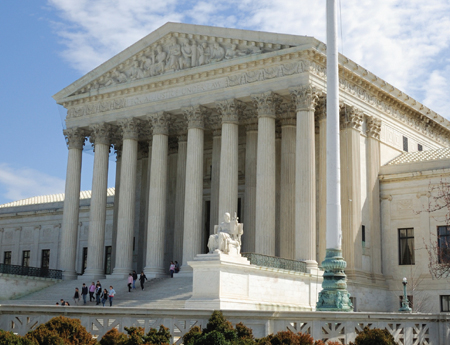Aereo Ruling May Set Stage For Defining Distributors

Broadcasters were breathing a big sigh of relief last week after the Supreme Court ruled 6-3 that Aereo was indeed providing a public performance of their work without compensation.
Their underlying challenge in the lower courts remains, and Aereo founder Chet Kanojia vowed to keep fi ghting. But even though the Supreme Court reversal of the Second Circuit’s denial of an injunction against Aereo does not technically settle those lower court cases, it effectively does, with language that makes it clear what Aereo is and isn’t.
What it is, says the court, is like a cable operator or other multichannel video programming distributor, and not simply a cool technology to access free stuff. That could give the FCC some direction in its proceeding on how to define an over-the-top video service provider, and could also send the decision’s critics to Congress for help clarifying its impact on other technologies, as the court pointed out.
Consolidation critics were arguing that the decision puts even more power in the hands of those who have the rights to legal content, using it to argue for everything from retrans reform to blocking a Comcast/TWC merger.
But for the moment, broadcasters were celebrating a big, if not totally unexpected, win.
Here, in the words of Justice Stephen Breyer writing for the majority, is the heart of the Court’s case against Aereo, and in the interests of fairness, a word from the three dissenting Justices.
“We must decide whether respondent Aereo, Inc., infringes this exclusive [public performance] right by selling its subscribers a technologically complex service that allows them to watch television programs over the Internet at about the same time as the programs are broadcast over the air. We conclude that it does,” wrote Breyer.
Broadcasting & Cable Newsletter
The smarter way to stay on top of broadcasting and cable industry. Sign up below
What that means: Aereo can’t deliver those signals without paying a copyright fee for the underlying content.
The court had to decide whether Aereo provided a performance, and whether that was a public performance subject to a copyright payment. “An entity that engages in activities like Aereo’s performs,” said the court, flatly, adding: “…an entity that acts like a CATV system itself performs, even if when doing so, it simply enhances viewers’ ability to receive broadcast television signals.….Aereo’s activities are substantially similar to those of the CATV companies that Congress amended the [Copyright] Act to reach. Just as the Congress brought cable operators under the copyright regime with a compulsory license, so, too, is Aereo’s TV signal enhancement service subject to that license.” The court was unpersuaded.
“In our view, however, the dissent’s copy shop argument, in whatever form, makes too much out of too little,” the court said. “Given Aereo’s overwhelming likeness to the cable companies targeted by the 1976 amendments [to the Copyright Act], this sole technological difference between Aereo and traditional cable companies does not make a critical difference here.”
The court made it clear it was not sticking its head into the cloud, as it were. “We agree with the Solicitor General that questions involving cloud computing [remote storage] DVRs and other novel issues not before the Court, as to which ‘Congress has not plainly marked [the] course,’ should await a case in which they are squarely presented.” Translation: This narrow ruling should not be construed to be a decision on the legality of any of those other methods of accessing content mentioned.
The court left open the option of congressional action for those who were still concerned about the decision’s impact on innovation.
AEREO ERROR?
Justices Antonin Scalia, Clarence Thomas and Samuel Alito provided some comfort to Aereo in a dissent from the court’s 6-3 ruling that the service was providing a public performance it needed to pay for. The dissenters suggested the majority got it all wrong.
“Aereo does not ‘perform’ at all. The Court manages to reach the opposite conclusion only by disregarding widely accepted rules for service-provider liability and adopting in their place an improvised standard (‘looks-like-cable-TV’) that will sow confusion for years to come.”
It wasn’t that they disagreed with the result of the decision, so much as with what they saw as the pretzel-like twisting of the statue to achieve that end. “I share the Court’s evident feeling that what Aereo is doing (or enabling to be done) to the Networks’ copyrighted programming ought not to be allowed,” wrote Scalia. “But perhaps we need not distort the Copyright Act to forbid it.”
Contributing editor John Eggerton has been an editor and/or writer on media regulation, legislation and policy for over four decades, including covering the FCC, FTC, Congress, the major media trade associations, and the federal courts. In addition to Multichannel News and Broadcasting + Cable, his work has appeared in Radio World, TV Technology, TV Fax, This Week in Consumer Electronics, Variety and the Encyclopedia Britannica.

